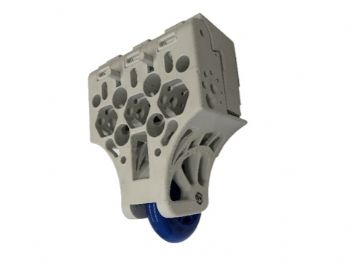
Solarlytics — a five-year-old start-up based in California — is developing a new technology that provides a significant uplift in the energy output from existing solar panels.
It is working towards developing a product and is currently engaged in research, testing and product engineering panel-handling technology.
The process of loading oddly shaped and heavy (80lb-plus) solar panels onto a testing rig is both awkward and labour-intensive.
Previously, it required multiple personnel and lots of space. There was also the risk of damaging and scratching the solar panel by dragging it to and from a flash test machine.
Co-founder Doug Raymond and his team started their panel-handling development process with ‘cheaper’ desk-top 3-D printers, but they quickly found the trial and error of calibration and reprinting to be extremely time-intensive and frustrating.
“Complex assemblies with tight tolerances were nearly impossible to print. The alternative of out-sourcing the parts needed could cost up to $10,000 — a price that would not allow for multiple iterations.”
In early 2019, the team bought a MakerBot Method 3-D printer (
www.makerbot.com), based on its ability to print complex geometries with dissolvable support material.
Mr Raymond said: “The beauty of the Method is that you can start the print at the end of a Friday, and when you are back in the office on Monday it is completely printed. The Method is a step above other 3-D printers we have used.”
After their initial success with Method, Mr Raymond’s team bought a second printer, this time opting for the Method X
Manufacturing Workstation, which can print higher-temp materials such as ABS and ASA — a UV-resistant form of ABS.
The wheel clamp assembly Solarlytics engineers designed and manufactured on Method allows a single person to roll the solar panel onto the flash test machine, position it and perform testing.